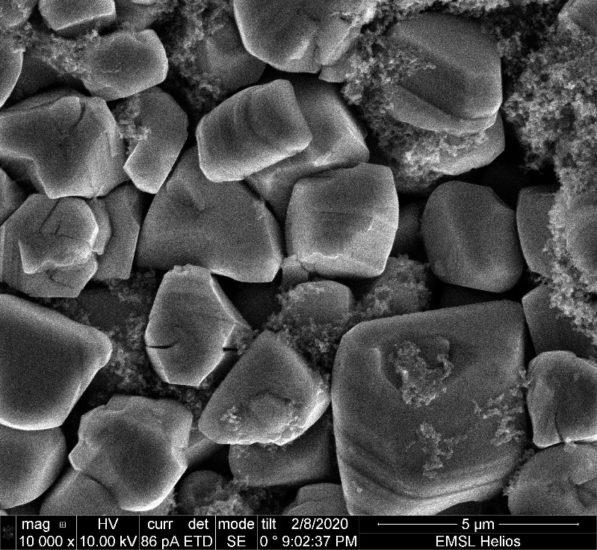UAM Word of the Day/Year/Decade: Lithium
eVTOLs Need Batteries; Batteries Need Lithium

In the 1967 Oscar-winning film, The Graduate, Dustin Hoffman received a one-word piece of advice from his father’s friend at his high school graduation party: “Plastics. There’s a great future in plastics.” The film, were it to be remade today, might give a recent college grad a different one-word recommendation: Lithium. (If a few words of advice were to be given, they would be: Rechargeable lithium batteries.)
With the urban air mobility (UAM) industry poised for takeoff in several years, most of the aircraft to be introduced will be electric vertical and take off aircraft (eVTOLs). These eVTOLs will operate on rechargeable batteries. The only batteries capable of sustaining eVTOLs (and thereby, the industry) are powered by lithium-ion. Thus, the need for this mineral, which is mined from the ores of petalite (LiAl(Si2O5)2, lepidolite K(Li,Al)3(Al,Si,Rb)4O10(F,OH)2, spodumene LiAl(SiO3)2, and also subsurface brines, is about to explode. The world’s largest producers of lithium are Australia and Chile.
Lithium demand—potentially the 21st century equivalent of a gold rush—is important enough that the U.S. Department of Energy Pacific Northwest National Laboratory (PNNL) has been working on how a single-crystal, nickel-rich cathode can be made hardier and more efficient.
Simply Complex—Lithium Batteries for Urban Air Mobility
For most people, batteries seem simple. Insert them in your devices, positive to positive side, negative to negative; but internally, batteries are quite complex. The chemical interactions inside ultimately take their toll, causing a battery to “die.” That wouldn’t bode well for eVTOLs—both manned and unmanned. Solutions must be found to extend battery life if UAM is to become the sustainable transportation mode it promises to be.
One way scientists hope to extend the life of a battery is by increasing the nickel content in it. Compared to other battery materials, such as cobalt, nickel is cheap, plentiful, and has low toxicity.
“Nickel-rich cathode materials have real potential to store more energy,” says Jie Xiao, the group leader of PNNL’s battery research program.
What’s the hold-up? “Large-scale deployment,” Xiao explains. Adding nickel to the material’s lattice destabilizes the cathode. It can also produce undesirable side effects, which make handling and storing the materials challenging, as well as damaging them.
Poly-Sci Batteries for eVTOLs
The most common nickel-rich cathodes today are polycrystals, many nanocrystals aggregated into one larger particle. That helps store and discharge energy more quickly but, over repeated cycles, polycrystals can break down. The end result is a cathode that fails quickly and raises the specter of safety issues.
To overcome this, the scientists at PNNL are experimenting with a single-crystal. The process grows high-performance crystals in sodium chloride (common table salt) at high temperatures. Just as a single, solid block of ice will melt more slowly in a camp cooler, a single-crystal will offer high power and stability.
eVTOL Gliding, Good; Crystal Gliding, Bad
After learning that the cathode breaks down because of a process called “crystal gliding,” the PNNL team has found a way to prevent the deterioration.
“With the new fundamental understanding, we will be able to prevent the gliding and microcracks in the single crystal. This is unlike the damage in the polycrystalline form, where the particles are pulverized in a process that is not reversible,” said Xiao. The gliding proved to be the underlying cause of the cracks the crystals developed.
To prevent the gliding, Xiao’s team found that operating the battery at a common voltage of about 4.2 volts minimized damage while still allowing electric vehicles to operate efficiently. By keeping single-crystal size below 3.5 microns, the damage incurred at higher voltages could be avoided. This would keep eVTOLs aloft longer and more safely. How much longer? Perhaps 25 percent longer than today’s lithium-ion batteries.
Working with specialty chemical manufacturers, the team, which includes lead author, Yujing Bi, and others from Brown University and the Brookhaven National Laboratory, hopes to soon demonstrate a viable process at kilogram scale.
Want to continue to stay up-to-date about the latest developments in the eVTOL industry? Subscribe to AeroCar Journal now. It’s FREE (for a limited time)!
Join us on Twitter for the latest news, analysis, and insight in the eVTOL industry. AeroCarJ


